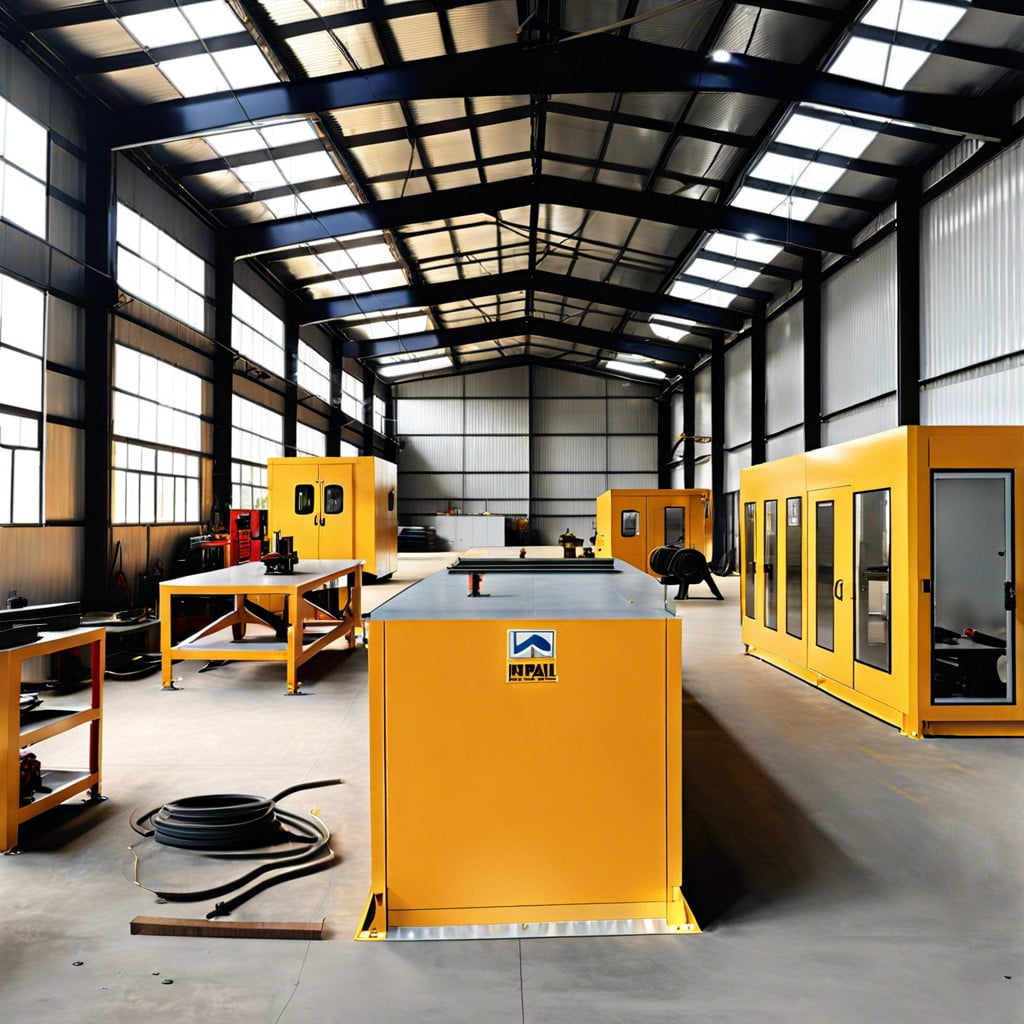Learn about the benefits, materials, and construction tips for metal workshop buildings.
Key takeaways:
- Metal workshop buildings offer exceptional strength and durability.
- Metal workshops are energy-efficient and customizable to fit various uses.
- Metal workshops have faster installation and minimal disruption on site.
- Metal workshops have a sleek, modern appearance and customizable aesthetics.
- Metal workshops are cost-effective and require less long-term maintenance.
Benefits of Metal Workshop Buildings

Metal workshops offer exceptional strength and durability, standing up admirably against extreme weather conditions like high winds and heavy snow. The inherent properties of steel also make these buildings highly resistant to fire, pests, and decay, ensuring long-term structural integrity.
These structures are notably energy-efficient. With proper insulation, a metal workshop maintains a consistent temperature, reducing heating and cooling costs year-round. The reflective surface of metal also minimizes heat absorption during warmer months, which can contribute significantly to energy savings.
The adaptability of metal buildings supports a wide range of uses—from automotive repair shops to woodworking spaces. The interior is easily customizable to fit heavy machinery, large workbenches, and storage systems. Clear span designs, which are free of internal columns, maximize usable space, allowing for more versatility in organizing tools and conducting work.
Furthermore, the installation process for metal workshops is faster and cleaner than that for many conventional materials, reducing labor costs and minimizing disruption on site. This effectiveness extends to future expansions or modifications, as metal structures can be adjusted with relatively little hassle.
Finally, the sleek, modern appearance of metal can be aesthetically pleasing, making it a potent choice not just for its functionality but also for its visual appeal.
Customizing Your Metal Workshop
Choosing the dimensions of your workshop is the first step in customization. This choice should reflect the nature of your work and the scale of projects you handle. From compact 20×30 feet spaces ideal for small-scale crafts to expansive 100×200 feet arenas for industrial tasks, your building can be scaled to suit.
Personalization extends beyond size. The placement and style of doors significantly affect your workshop’s functionality and accessibility. Consider both traditional overhead doors for machinery and sliding doors for regular entry. Additionally, windows can be added to welcome natural light, enhancing the work environment.
Interior layouts are also flexible. Open floor designs are popular for accommodating large equipment or assembly processes, whereas partitioned spaces support diversified activities, from offices to storage areas.
External aesthetics can also be tailored. Choose from a variety of colors and finishes to match your brand or blend with the environment. This customization not only appeals aesthetically but also boosts morale and creativity among users.
Durability and Maintenance of Metal Workshops
Metal workshops boast exceptional longevity, largely due to their resistance to elements like rust, mold, and pests. This resilience comes from the galvanized steel commonly used in construction, which has a protective coating that fights corrosion.
Minimal routine maintenance is required to keep your metal workshop functioning well. A periodic check for scratches or dents will suffice for upkeep, while ensuring the structural integrity remains intact. Unlike wooden structures, there’s no need for treatments or concern about rot.
The inherent strength of steel also means these buildings can withstand severe weather, including heavy snow, hurricanes, and earthquakes, better than other materials. This makes metal workshops a reliable choice for areas prone to extreme conditions.
With minimal upkeep and enduring durability, metal workshops provide peace of mind and a safe, reliable space for work and storage over an extended period.
Cost Analysis: Metal Workshops Vs. Traditional Workshops
Metal workshops often present a more cost-effective solution upfront compared to traditional wooden or brick structures. The standardized components used in metal workshops reduce manufacturing and assembly costs. Additionally, the reduced labor time needed for construction can significantly lower the overall expenditure.
In terms of long-term financial considerations, metal buildings require less maintenance. They are resistant to pests like termites and are less susceptible to mold and mildew. This durability translates into savings on repairs and maintenance over the life of the building.
Insurance costs can also be lower for metal workshops because of their fire-resistant properties and sturdiness in adverse weather conditions. This makes them safer and potentially reduces insurance premiums.
On the other hand, traditional workshops may involve higher costs due to the need for ongoing maintenance and the potential for structural degradation. The cost of materials like wood can also fluctuate more than steel, adding an element of financial unpredictability.
While the initial investment might be higher for some metal workshops, especially those with extensive customizations, the long-term savings and durability often balance the scales in favor of metal as a more economical option overall.
Steel Workshop Vs Pole Barn Workshop
Choosing between a steel workshop and a pole barn workshop hinges on several critical factors, such as budget, intended use, and longevity.
Steel workshops are heralded for their exceptional strength and durability. These structures typically withstand severe weather, including high winds and heavy snow. Their fire-resistant properties make them a safer choice for workshops that will house welding or other heat-intensive activities.
Pole barn workshops, on the other hand, often cost less up-front and can be quicker to erect. Their design, featuring large poles buried in the ground, offers a wide-open interior space ideal for storage or large equipment. However, they generally don’t provide the same level of resistance to the elements or insulation as steel buildings.
In terms of maintenance, steel buildings demand less upkeep. They resist pests and decay, which can be a problem for wood-based structures like pole barns. Over time, the lower maintenance costs can offset the initial investment in a steel workshop.
For someone planning to utilize their workshop extensively and looking for longevity, a steel workshop might be the better investment. Conversely, if you’re constrained by a tight budget and need a functional space quickly, a pole barn might do the trick.